A strategy for food security to feed a city of 5.5 million people
Lim Chu Kang Urban Agriculture District
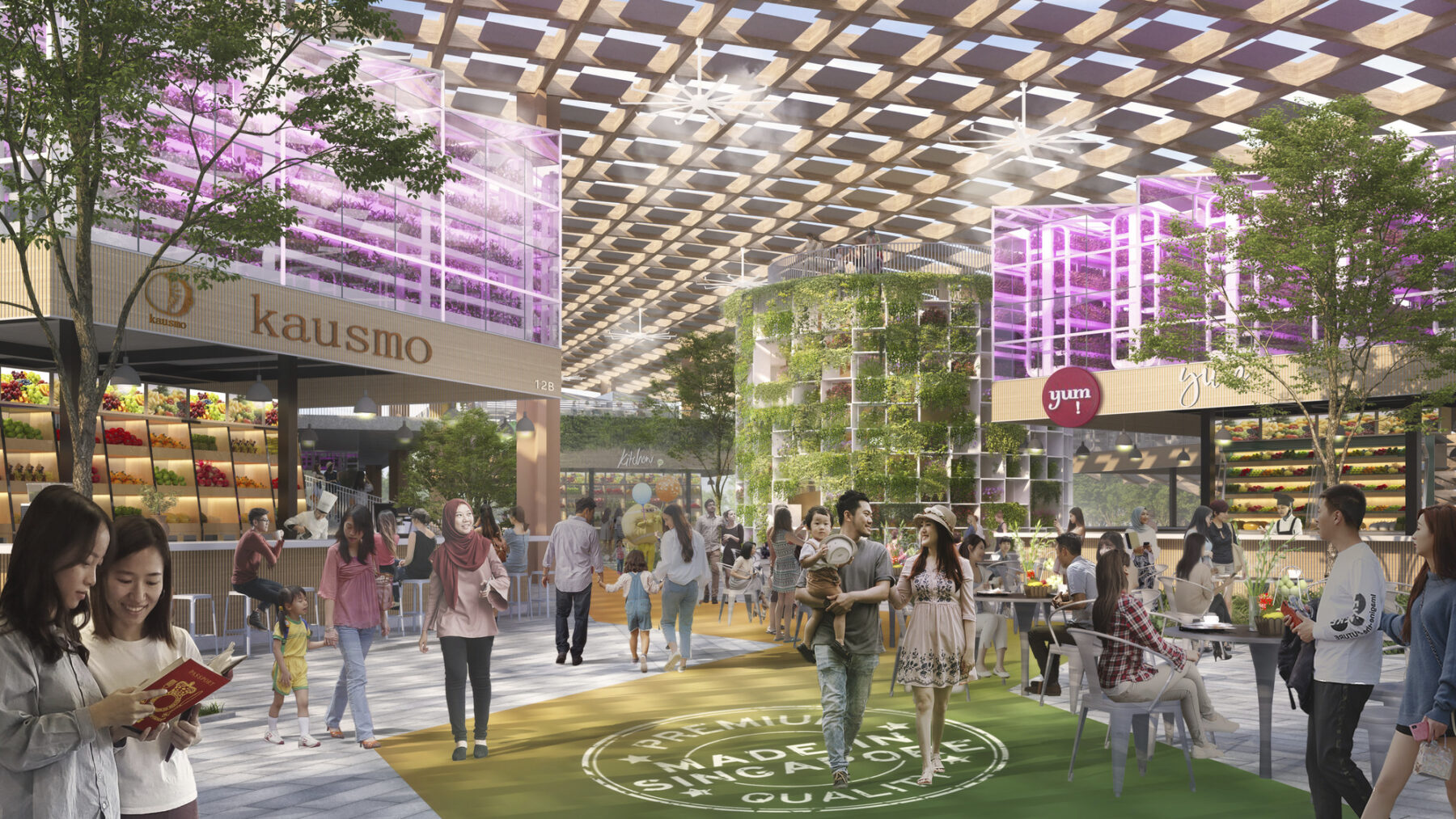
Singapore is a nation of foodies, and its food story has historically been deeply intertwined with the Lim Chu Kang area. With agriculture comprising only 1% of Singapore’s land area, the existing farms at Lim Chu Kang are critical to its food supply. Increasingly, volatile supply chains, compromised food quality, and environmental concerns pose significant threats as the nation relies more heavily on imported food and overseas sources. Singapore’s commitment to growing 30% of its food needs locally by 2030 is not simply foresight, it is for its survival.
Agriculture is in the midst of a paradigm shift from land-and-labor intensive models to more technology-and-data intensive ones. To address this, the plan for Lim Chu Kang necessitated a transformation of a perception of agriculture as traditional, back-breaking manual labor to one that is exhilarating and provides job opportunities to the country’s highly-skilled labor force. It is also an opportunity to position Singapore as a global leader in the rapidly evolving field of advanced agriculture.
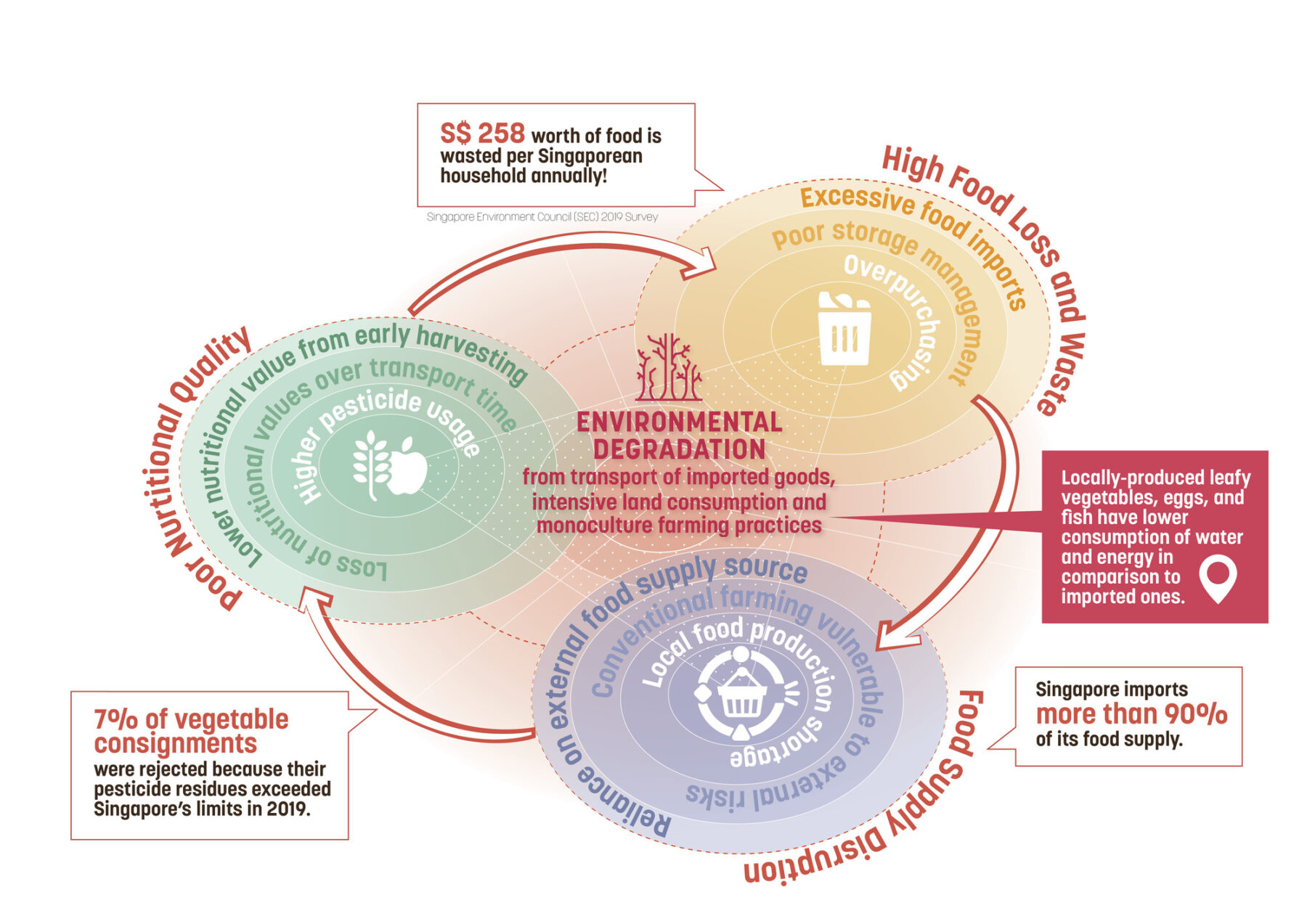
Singapore encounters food security and environmental degradation problems
Agriculture Planning
Throughout Lim Chu Kang’s analysis and planning stages, a rigorous methodology to select the most sustainable and commercially viable agricultural systems was developed. High-level resource and land-use efficiency goals led to the design of a series of integrated, symbiotic production systems all based on predictive modeling for specific crop yields. These systems repurpose would-be waste from one system into useful inputs for the next while also producing significant quantities of food on a limited land footprint.
The design team paid special attention to balancing the technological, economic, and political feasibility of implementing these integrations. Detailed focus was given to implementation in terms of minimizing capital investments, interagency reparcelizations, and the ambitious timeframe for development that would match specific yield requirements.
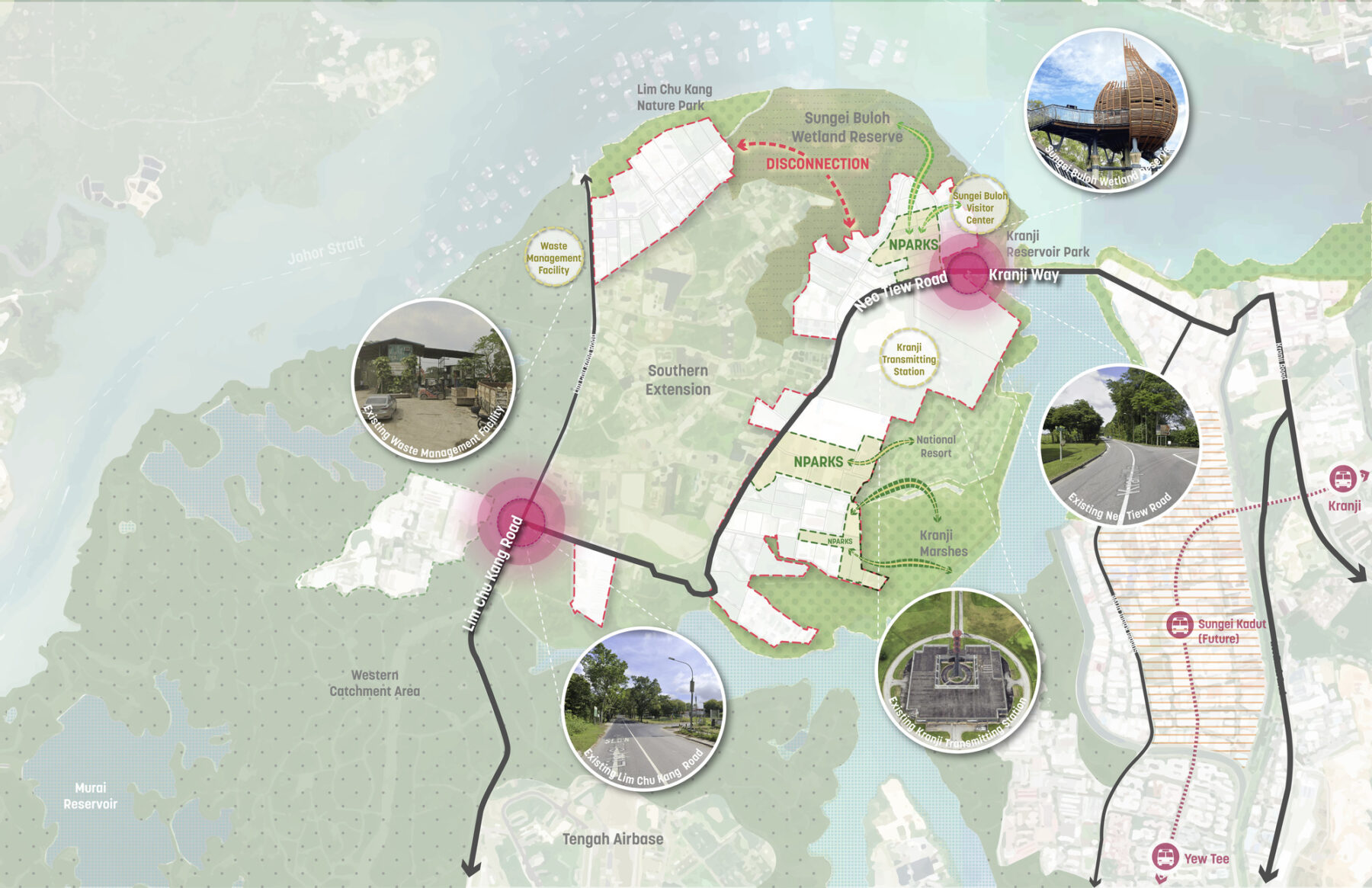
The Lim Chu Kang site is designated as the center for producing local food, feeding Singaporeans and reducing environmental impacts
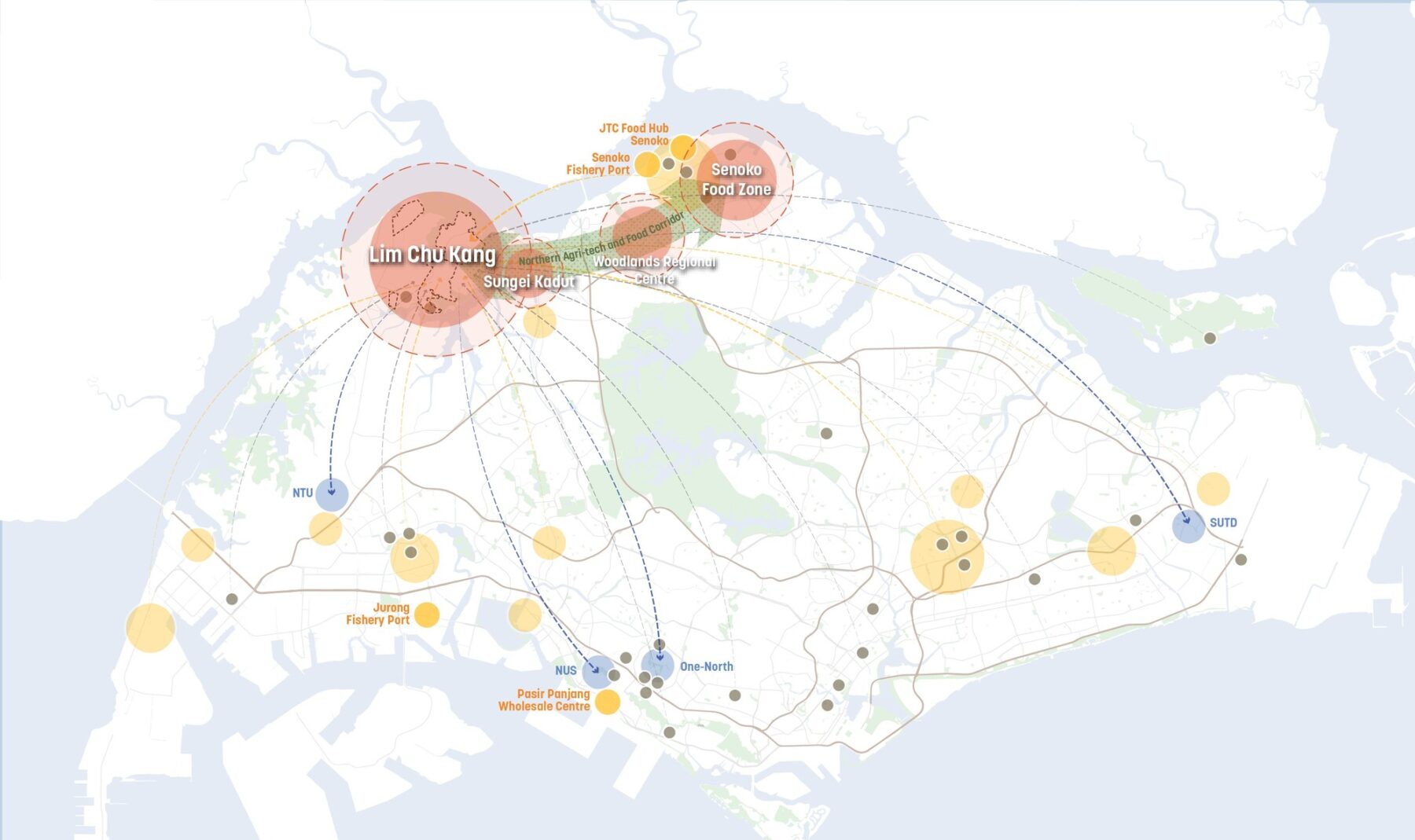
Connectivity throughout the Lim Chu Kang Urban Agriculture site
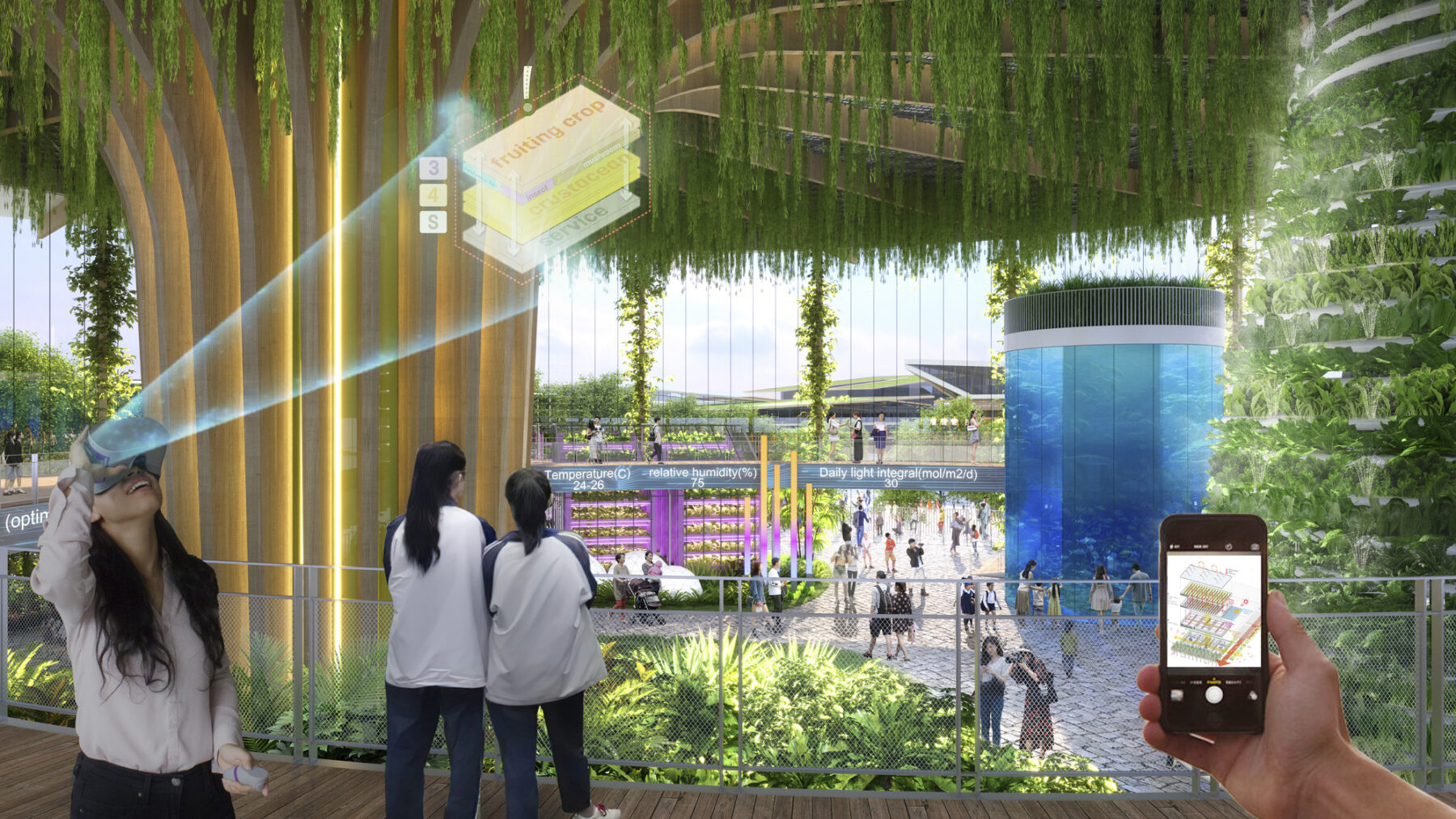
The design incorporates a multi-media learning experience at the Circulatory Museum, showcasing student projects alongside national agriculture technology
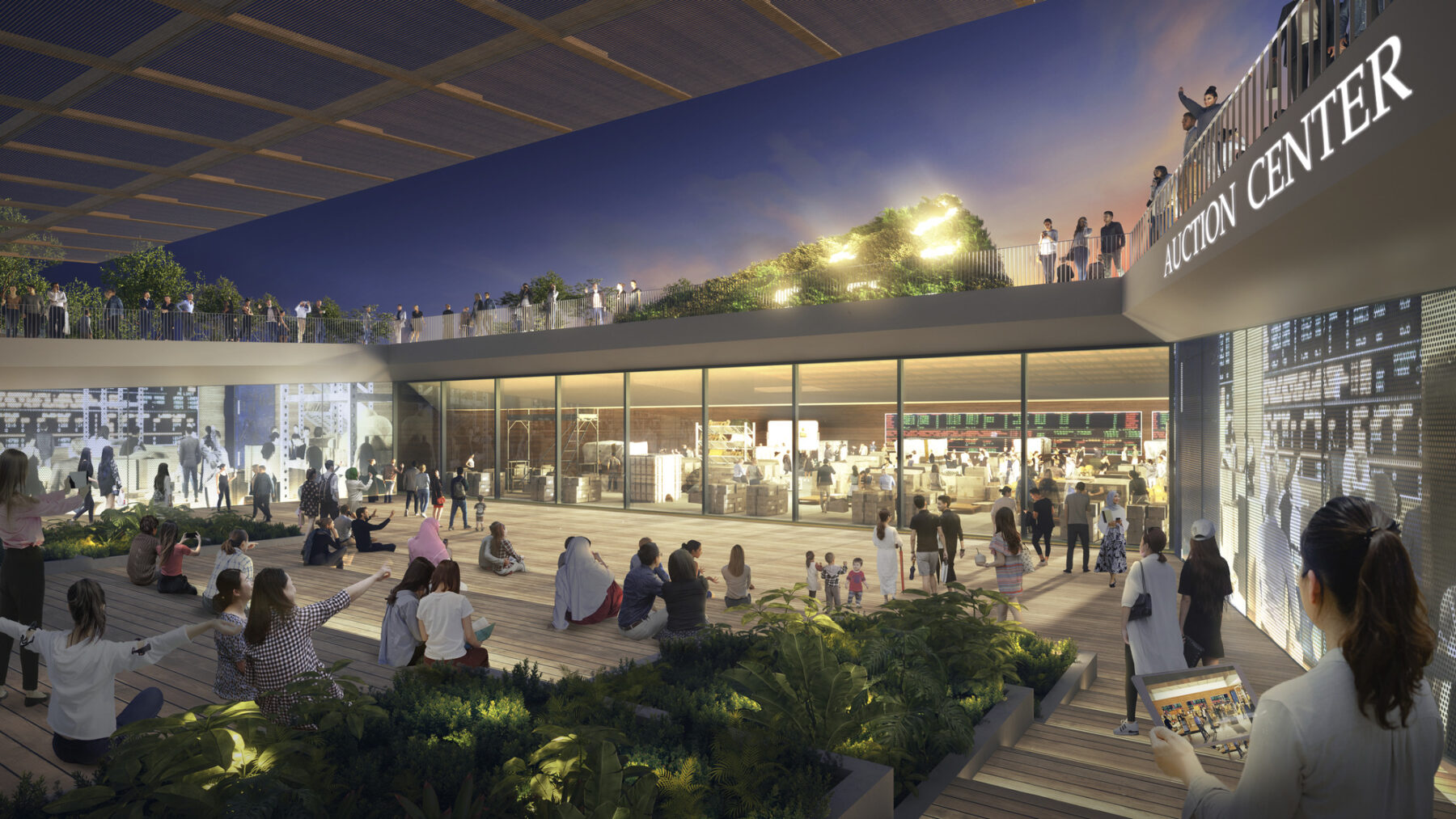
Key Principals and the Lim Chu Kang Lunchbox
Resilience is at the root of the Lim Chu Kang Urban Agriculture District. From coastal protection to eco-corridors and renewable energy sources to rainwater harvesting, the district strives to be a leader in ecologically sensitive development that ensures that efficiency and productivity can go hand-in-hand with environmental sustainability. With its ambitious crop yields and food production goals, Lim Chui Kang embraced flexibility and circularity as a core value that drove the entire analysis, planning, and design process.
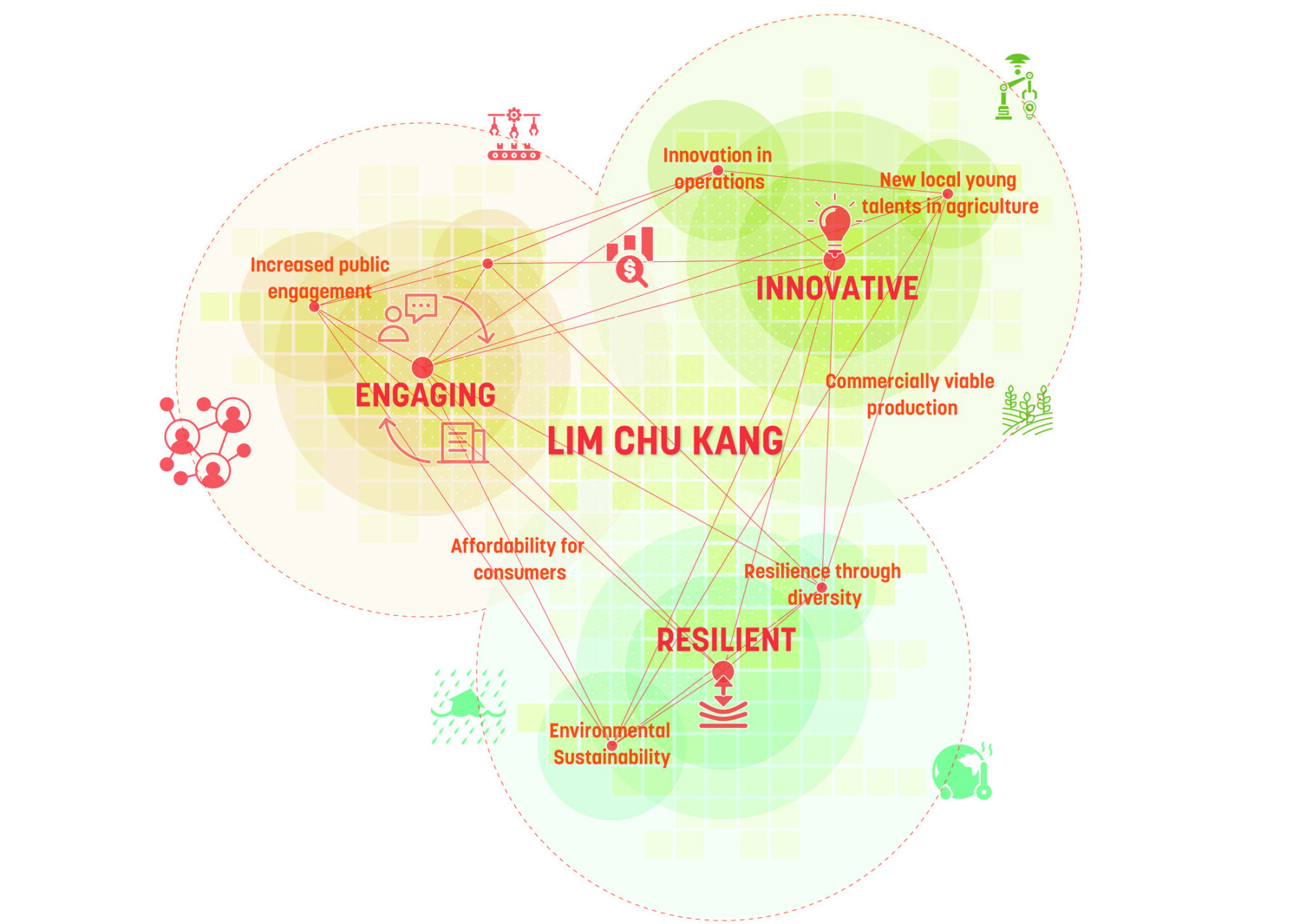
A future agri-food hub of engagement, innovation, and resiliency
Through optimized production systems across five scales, the district’s modular typologies are designed to reduce dependency on external inputs and improve resource efficiency while reducing waste in the agricultural system. The stacked production model draws inspiration from the traditional lunchbox typology and local dietary palette that are both unique to Singapore and reflective of its multi-cultural heritage. The co-location of production and public facilities work together to create a self-sufficient cluster that produces food but also inspires and teaches visitors about the complexities of how our food – which is often taken for granted – is sourced.
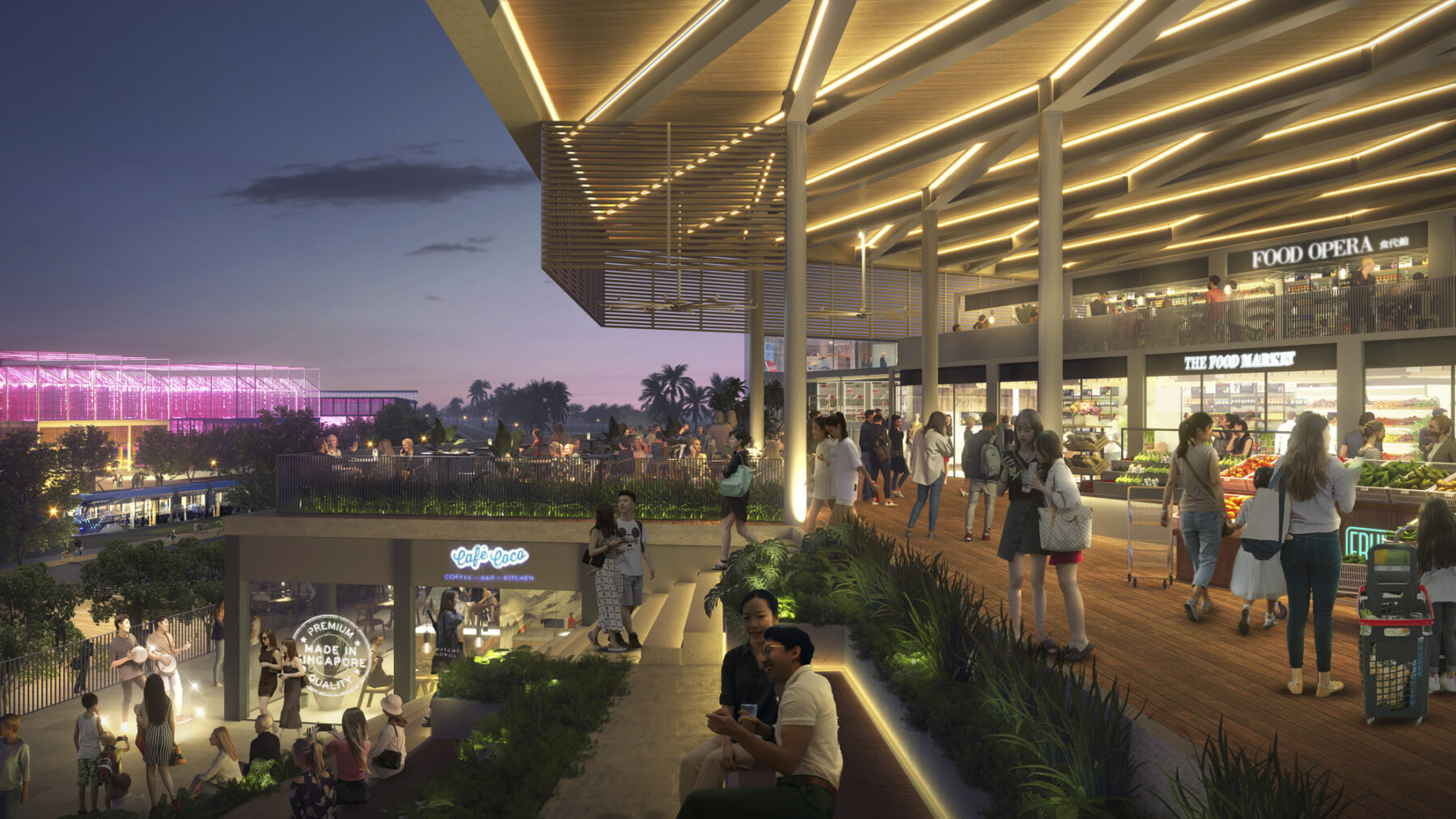
a framework that encourages social interaction while reintroducing nostalgic community spaces with new lifestyles
Design Framework and Placemaking
With all government ministries supporting the overarching directive of food security, Lim Chu Kang has a big mission ahead. While it is crucial to test both technological and typological advancements, the design team emphasized an equal importance of creating a place that was approachable, accessible, and centered on the diversity of cultures and demographics of Singapore, and to align these with the vision for the district.
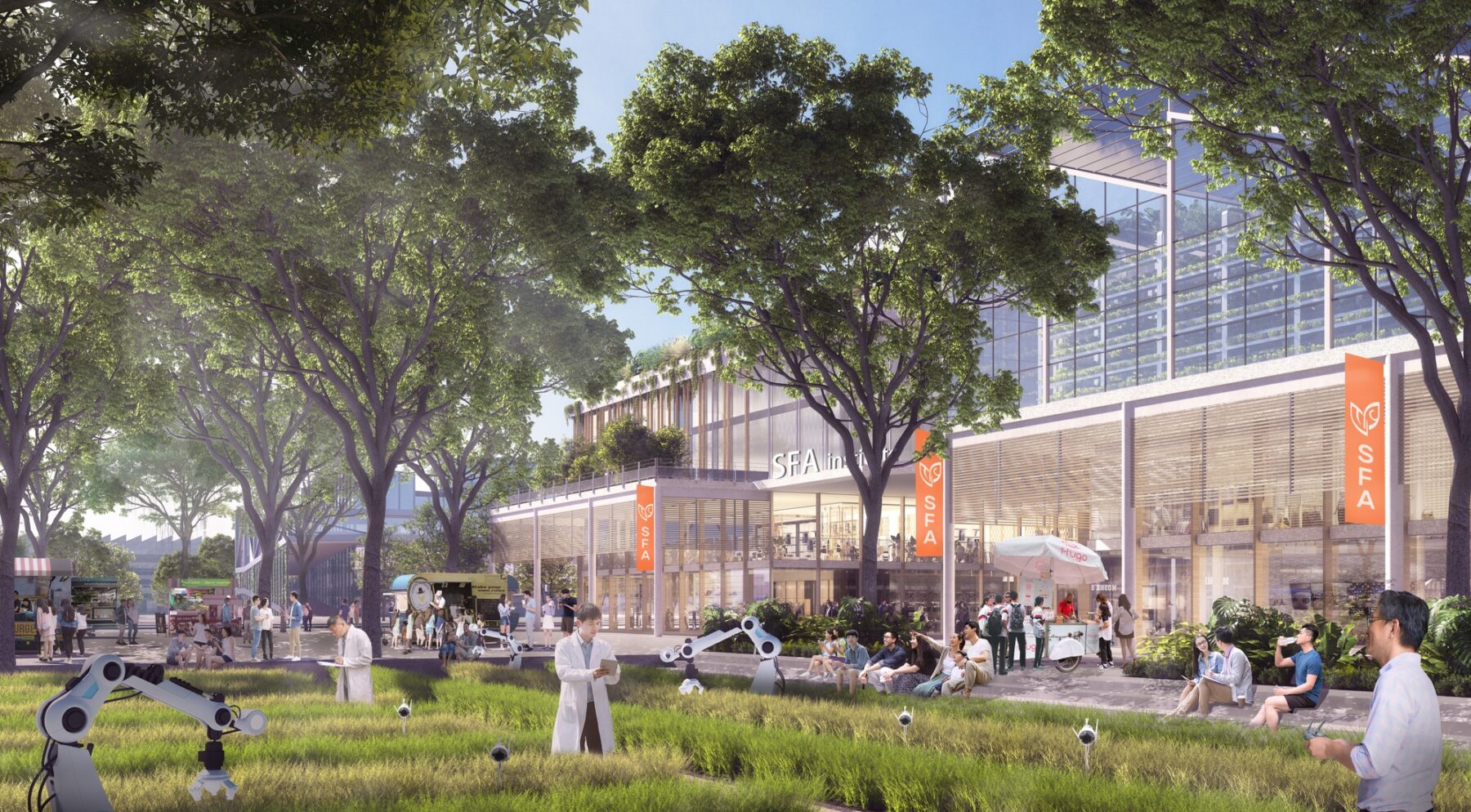
A central public spine for production, interaction, and education
To achieve this, Lim Chu Kang is organized into three zones to create a balanced and vibrant mix of program elements, with each celebrating a distinct character. The Sprout Hub, Pollinator Hub, and Harvest Hub each have unique programmatic elements which keep visitors engaged and informed, demystifying 21st century food production and providing a glimpse into how high-tech agriculture can also help to shepherd Singapore’s next frontier of sustainable development. Spaces for public engagement, education, and knowledge sharing are integrated via a transit corridor that connects the various zones running through the heart of the site and links to the Singapore MRT system, providing efficient mobility options.
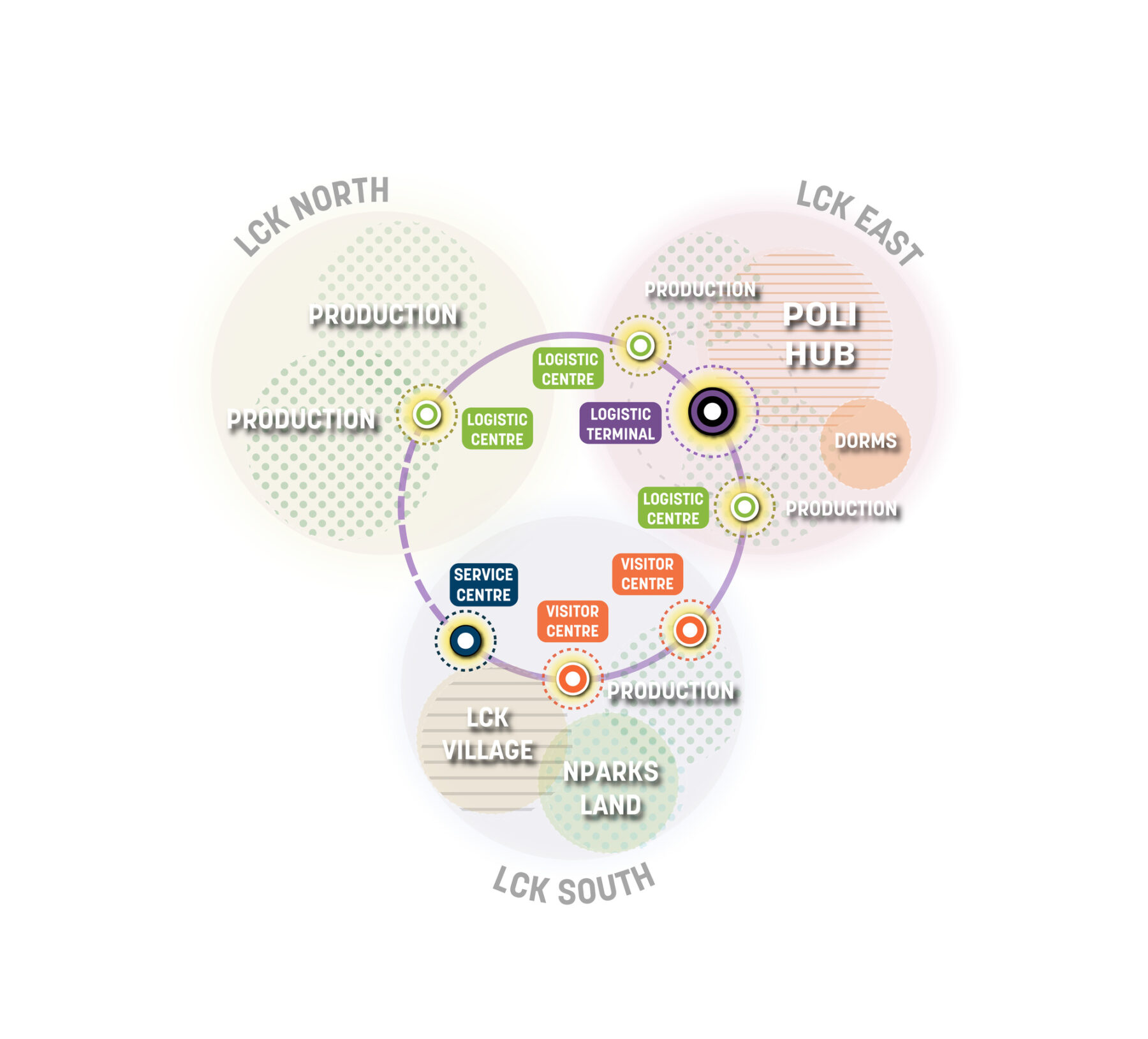
A vibrant blend of district programs
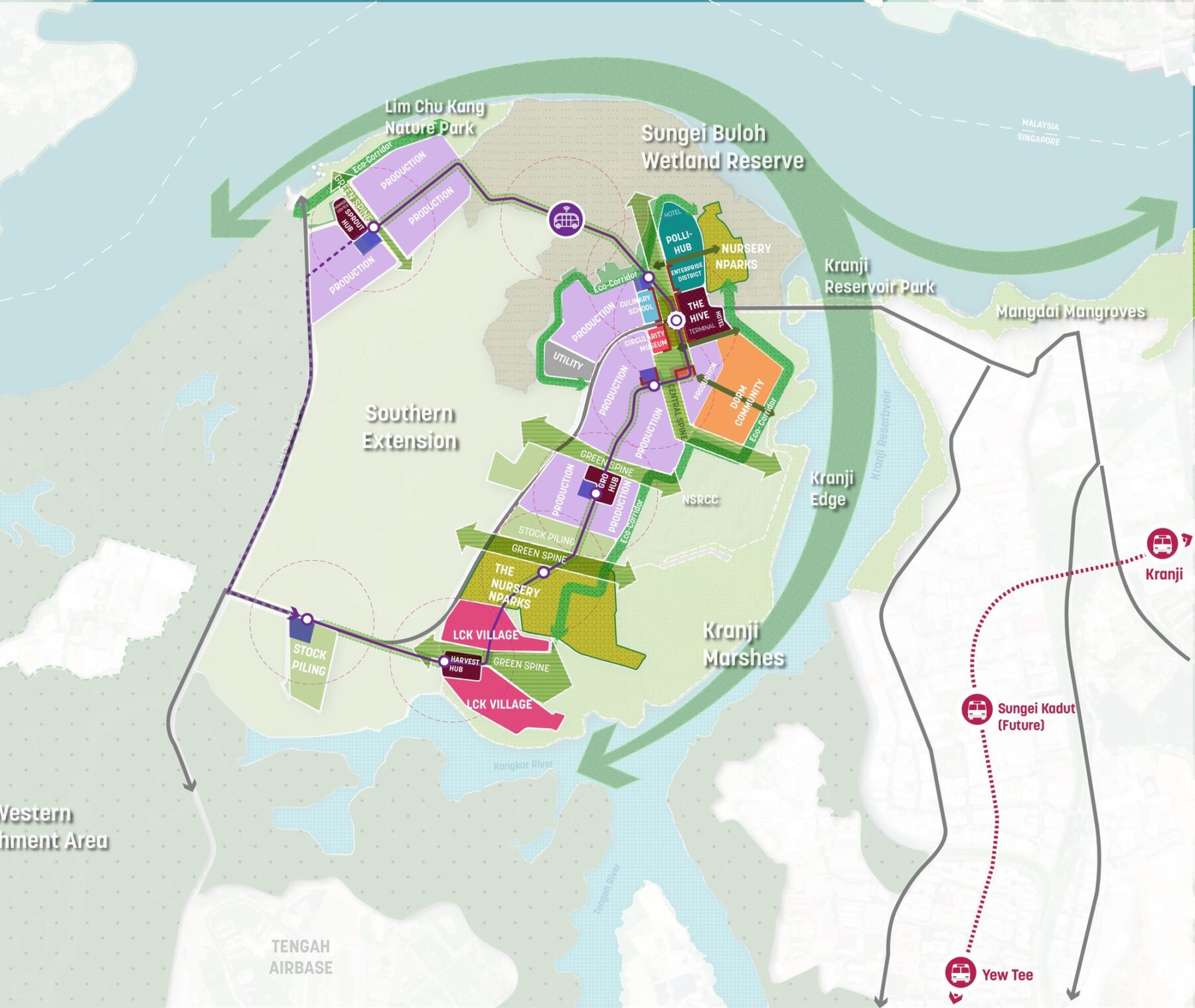
An innovative urban framework
To support its mission as a center for research that will export urban agriculture innovation, practices, techniques, and skill sets, Lim Chu Kang will also be a home for satellite campuses of local universities, global R&D centers, and enterprise districts where private industry can iterate alongside public sector agencies and academic institutions. All of these areas are woven together with aast-west green spines that act as open space corridors for workers and visitors to navigate the site, while also connecting to restored coastal wetlands that surround the district. A continuous green corridor along the reservoir and towards the northwest acts as an additional ecological corridor of native landscapes. These spaces offer a hands-on, immersive rural experience while also integrating curing-edge agriculture like food forests, providing a new way to engage with the countryside.
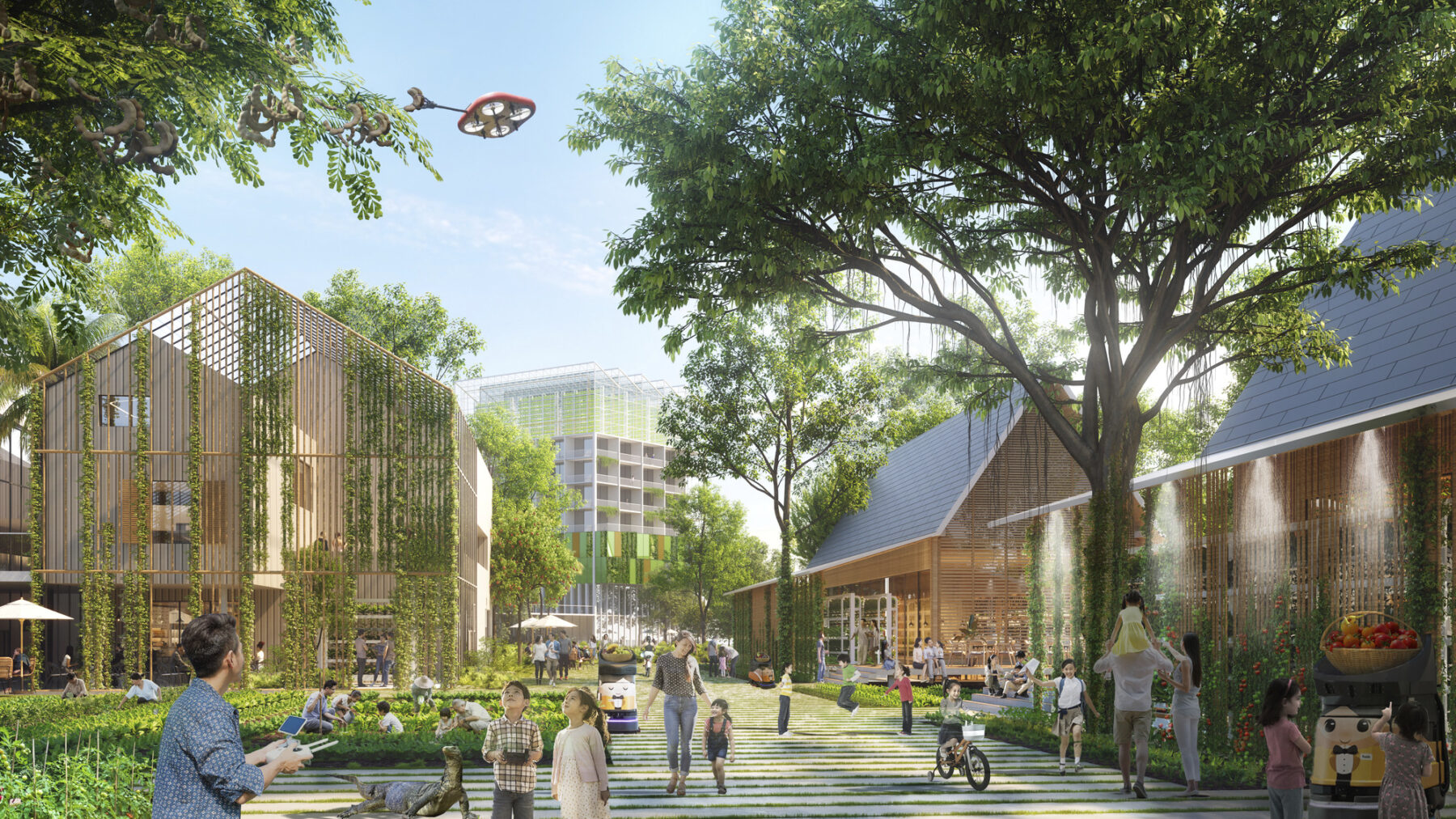
Novel urban experience at HarvestHub Farm Community Centers to public spaces
Long-term Vision
Around the world, 47 million acres of rainforest are lost every year to agriculture. In fact, agriculture is responsible for 90% of rainforest destruction, especially in Asia and South America. With 10 billion people to feed, this is first and foremost a land use issue, and that’s what landscape architects do best. Food as we know it today is not sustainable, but Lim Chu Kang seeks to alter that paradigm. Systematic planning, well-curated growth strategies, and engagement with stakeholders and expertise across the nation and the region will transform Lim Chui Kang from a tucked-away corner of Singapore into the flagship food resilience model for Southeast Asia. It will be a hub for knowledge, sustainability, and innovation.
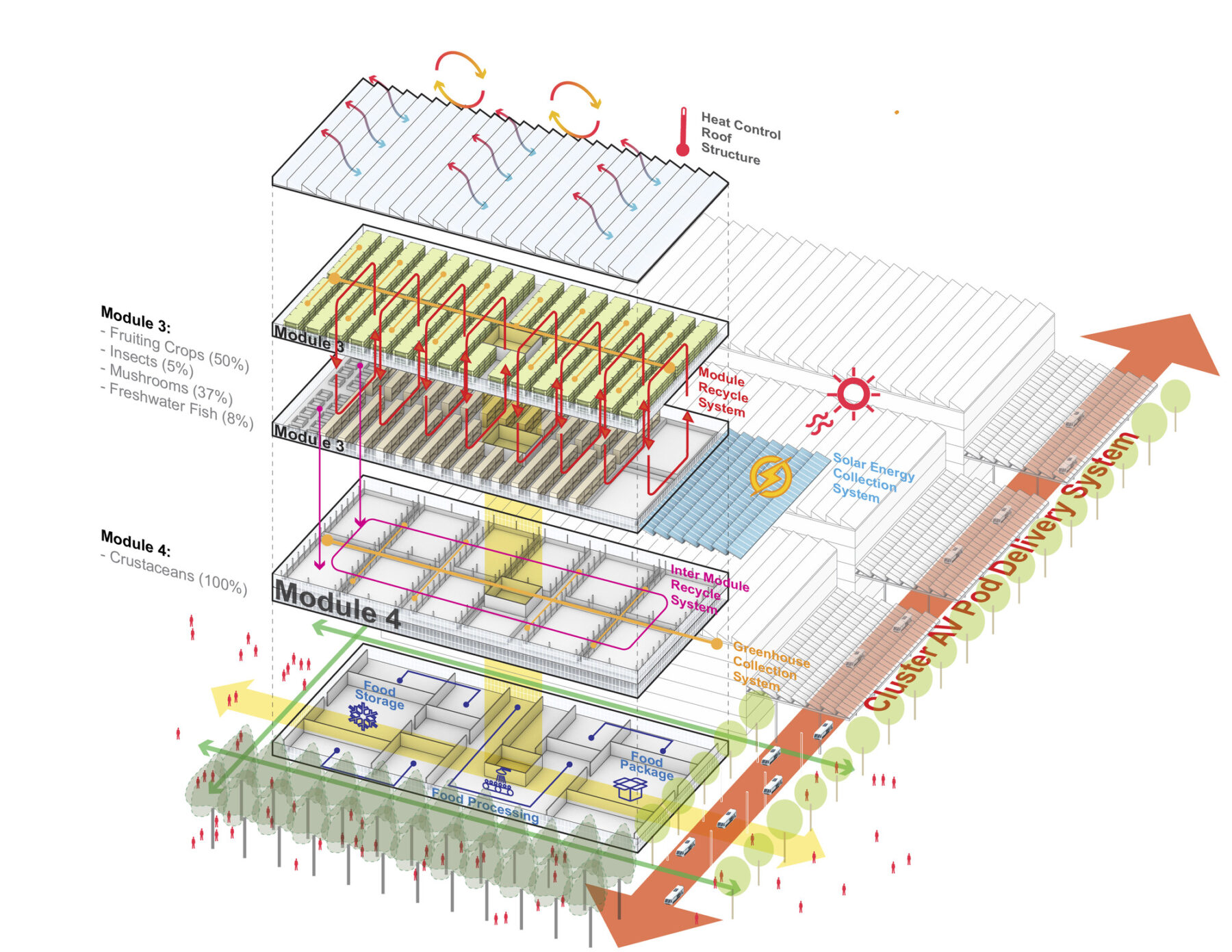
Modules are combined into buildings and parcels to reach critical mass at which each production type is optimized
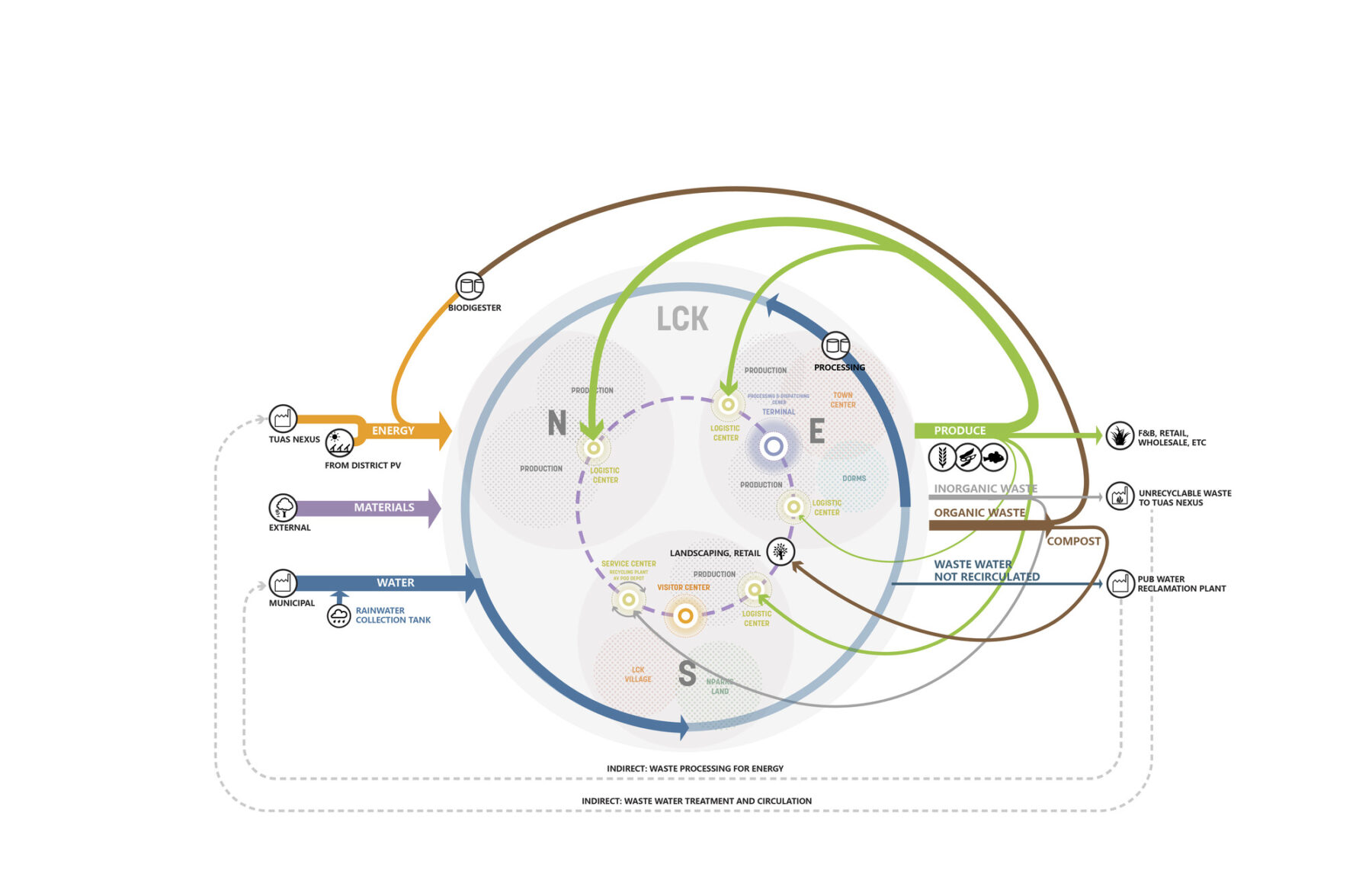
Recirculating resource flows at the district, cluster, parcel, and module level
By providing a comprehensive plan that scales up agriculture operations in Singapore to produce enough to feed over 1.7 million people annually, Lim Chu Kang is a statement of unity, where government agencies, farmers, producers, retailers, consumers, corporations, and institutions are joined together in a shared mission to sustain our tomorrow.
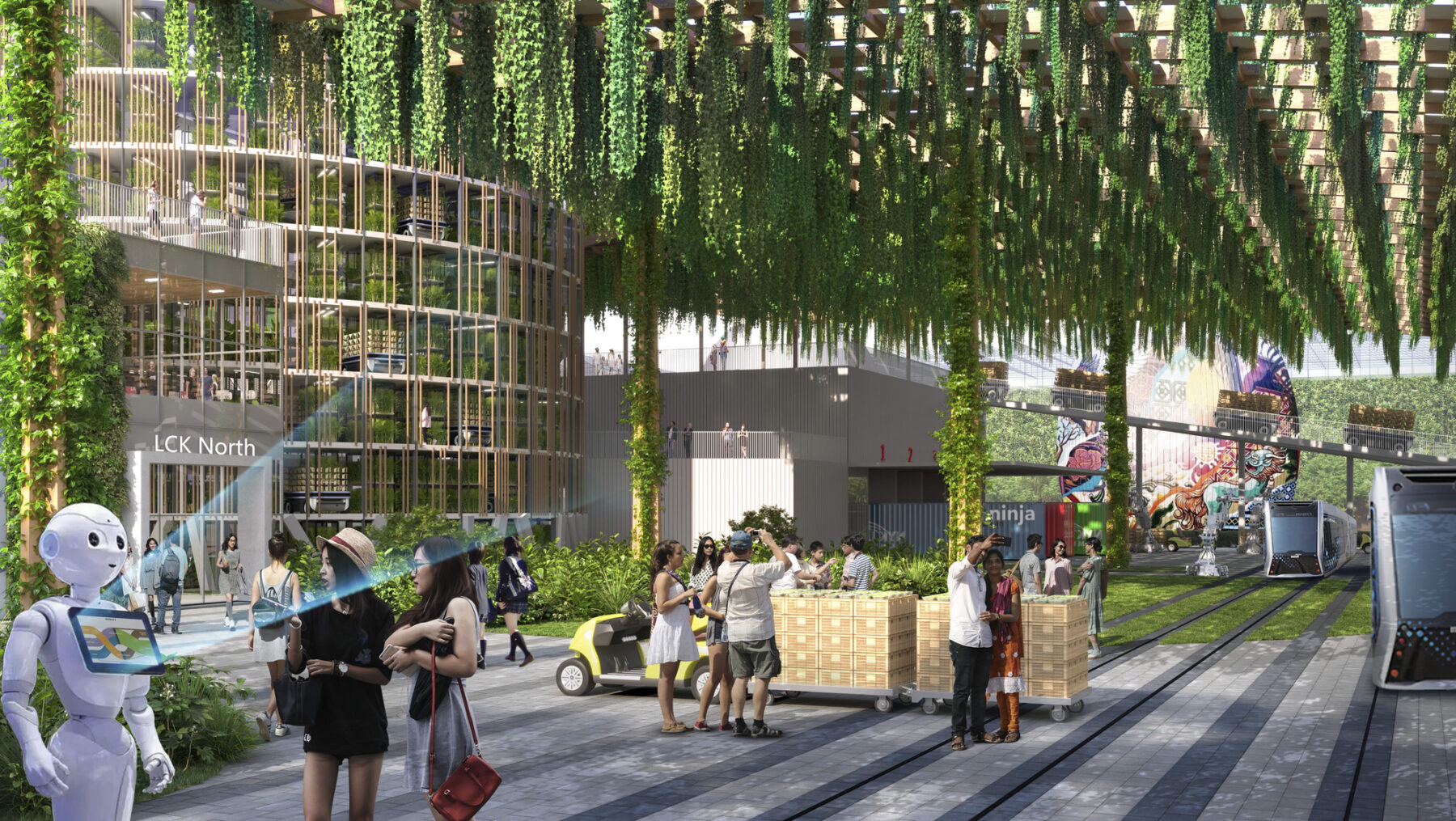
A logistic center of goods, workers, and tourists
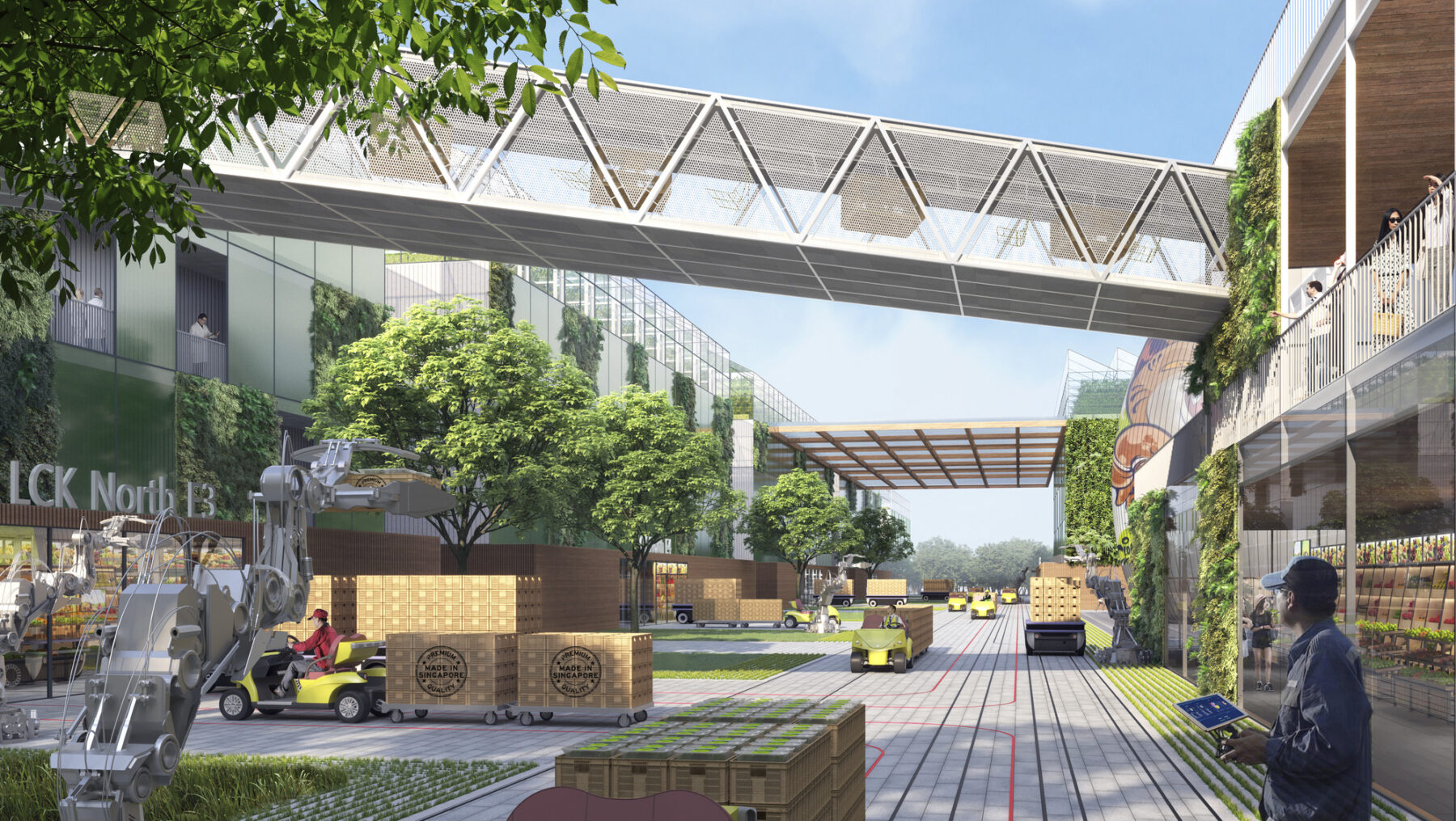
A functional corridor empowered by clean energy and artificial intelligence
For more information contact Michael Grove.
